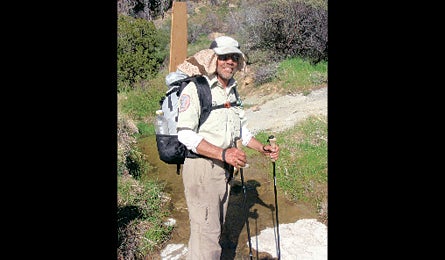Ultralight Done Right: The Best Gear for the Least Weight

'Rik Christensen (Courtesy photo)'
Trade Up
1. Replace one item at a time. Start with the heaviest stuff (bag, pad, and tent, but not pack), then tackle apparel, boots, and cookware, advises Carlos Figueroa, an ultralighter who averages 5,000 trail miles per year. When you’ve downsized everything else, then get a smaller, lighter pack.
2. Don’t sacrifice comfort. “Ultralight isn’t always right,” says Justin Lichter, who’s hiked more than 20,000 miles since 2002. Can’t sleep without an inflatable pad? Don’t make do with thin foam. Even Lichter, whose typical base weight is nine pounds, insists on padded shoulder straps and a hipbelt.
3. Shop for average conditions where you hike, not the worst-case scenario. Pick a sleeping bag rated to typical nighttime lows and wear extra clothes to bed if it gets colder.
4. Assess your style. Like to bushwhack? Extremely light fabrics like silnylon aren’t for you. “You have to sacrifice durability for weight,” says Rik Christensen, an ultra-ultralighter and gear designer with six decades of backpacking experience.
ADVICE FROM THE PROS:
How low can you go?
Rik Christensen, a longtime hiker and designer for Gossamer Gear, has whittled his base weight (everything but food and water) down to an insane five pounds. Here’s what he totes:
- Handmade, 3,000-cubic-inch, silnylon pack: 12.5 ounces
- Modified Nunatak Back Country Blanket: 1.5 pounds
- 52″x19″x.25″ foam sleeping pad: 3.5 ounces
- Handmade cuben-fiber shelter: 8 ounces
- Pot with lid, Esbit stove, spoon, bowl: 4 ounces
- 1 pair long underwear bottoms, long-sleeve top, insulated cap, 2 pairs socks, raingear, 1 pair silnylon chaps, 1 silnylon skirt: 1.2 pounds